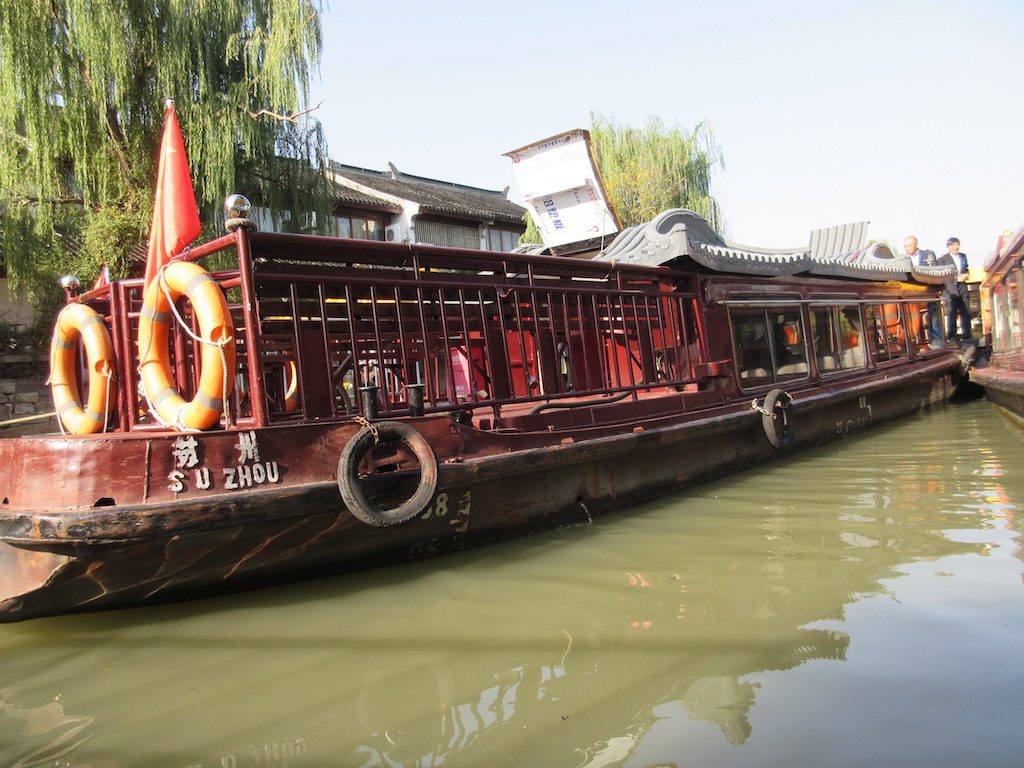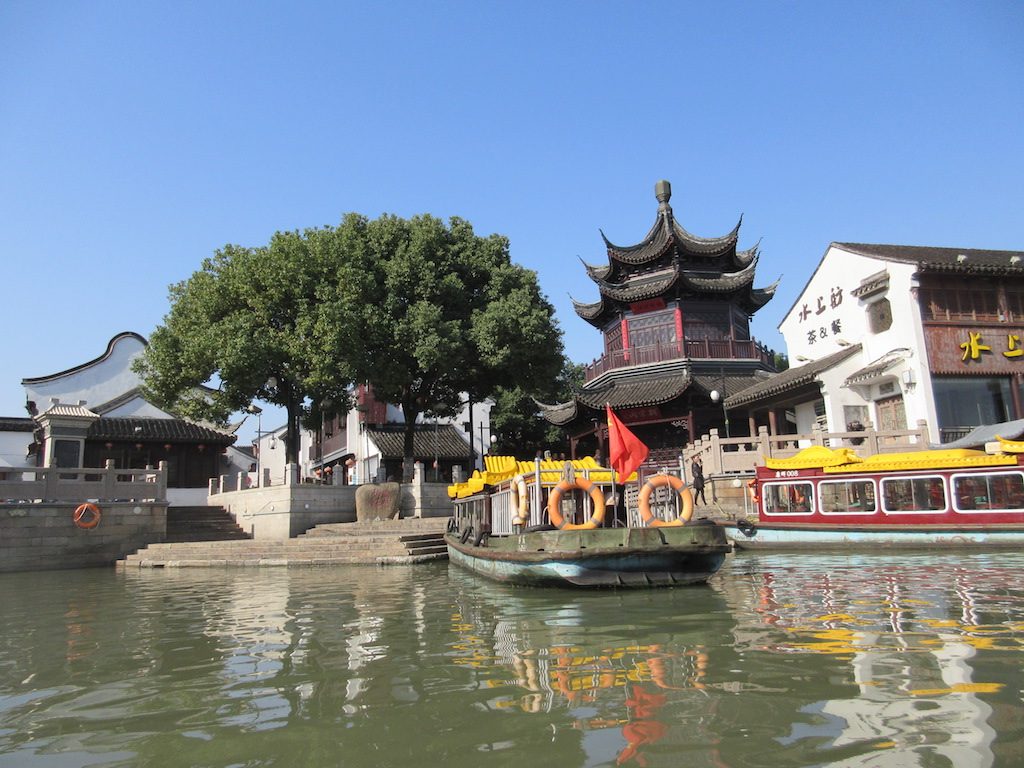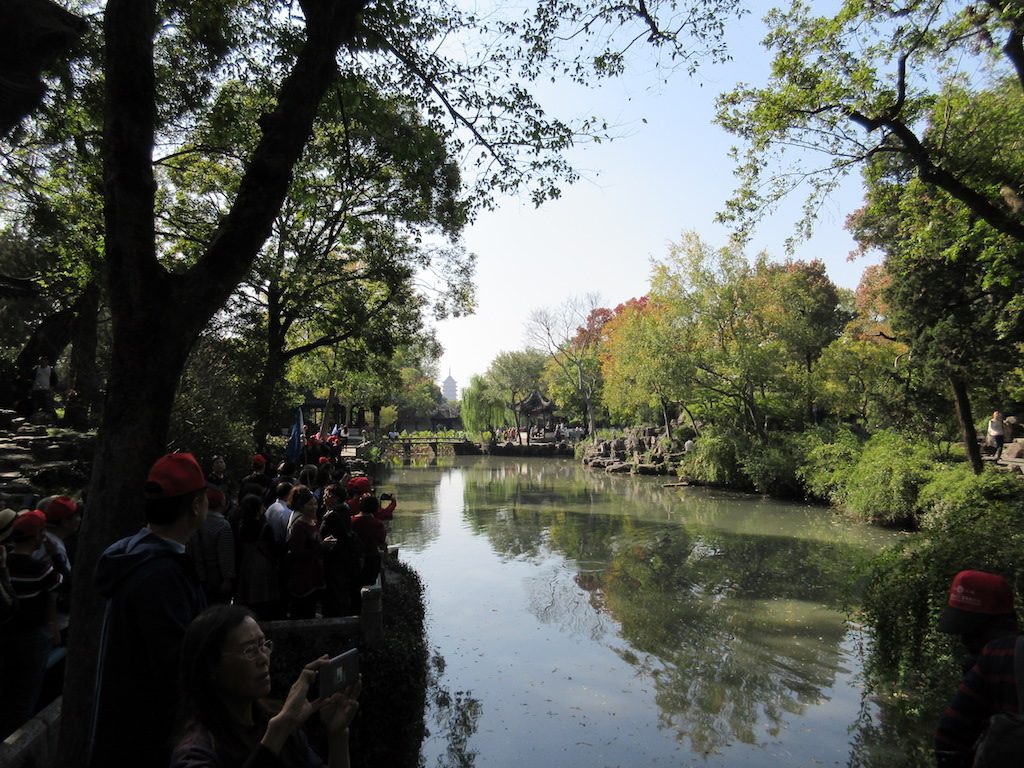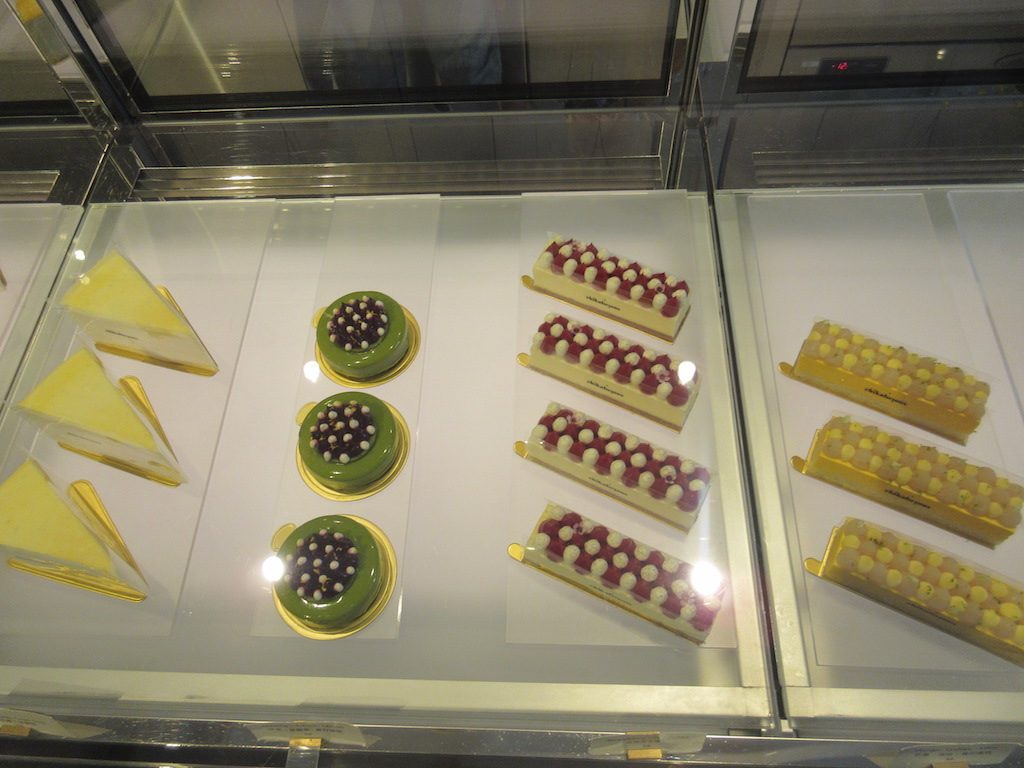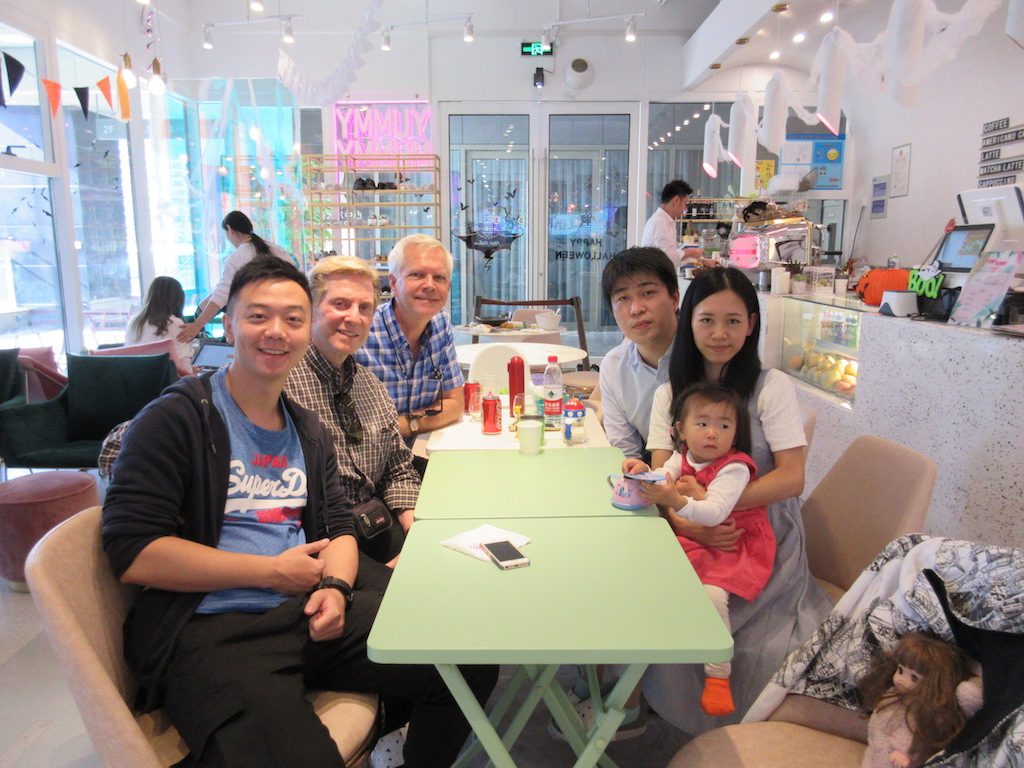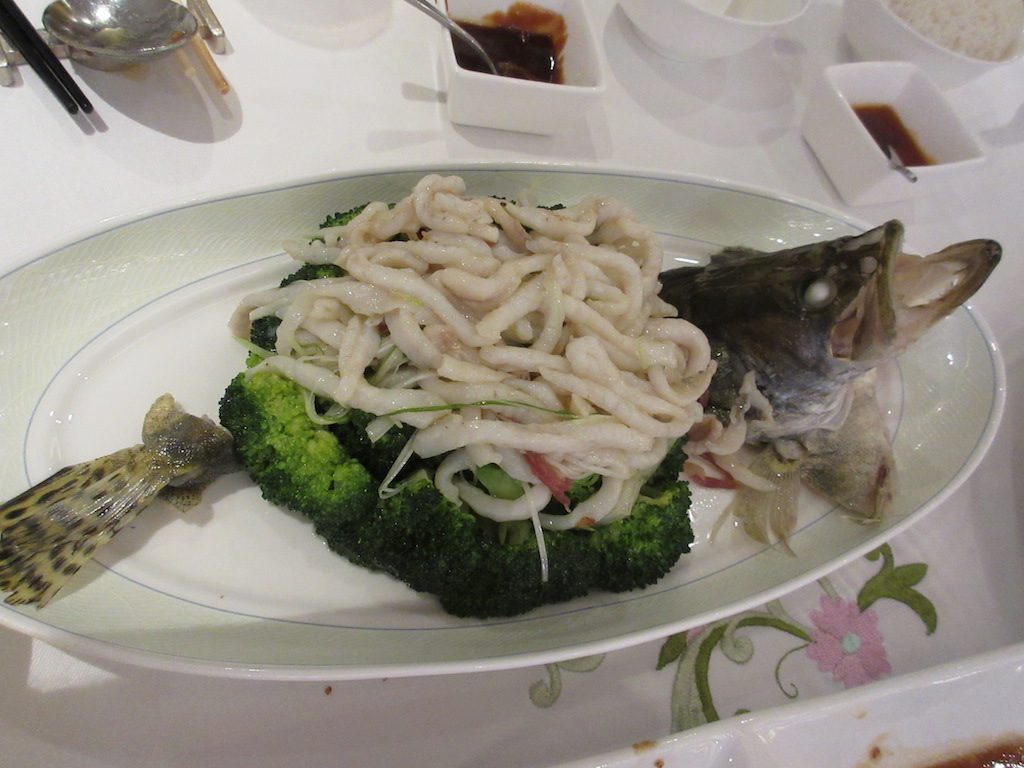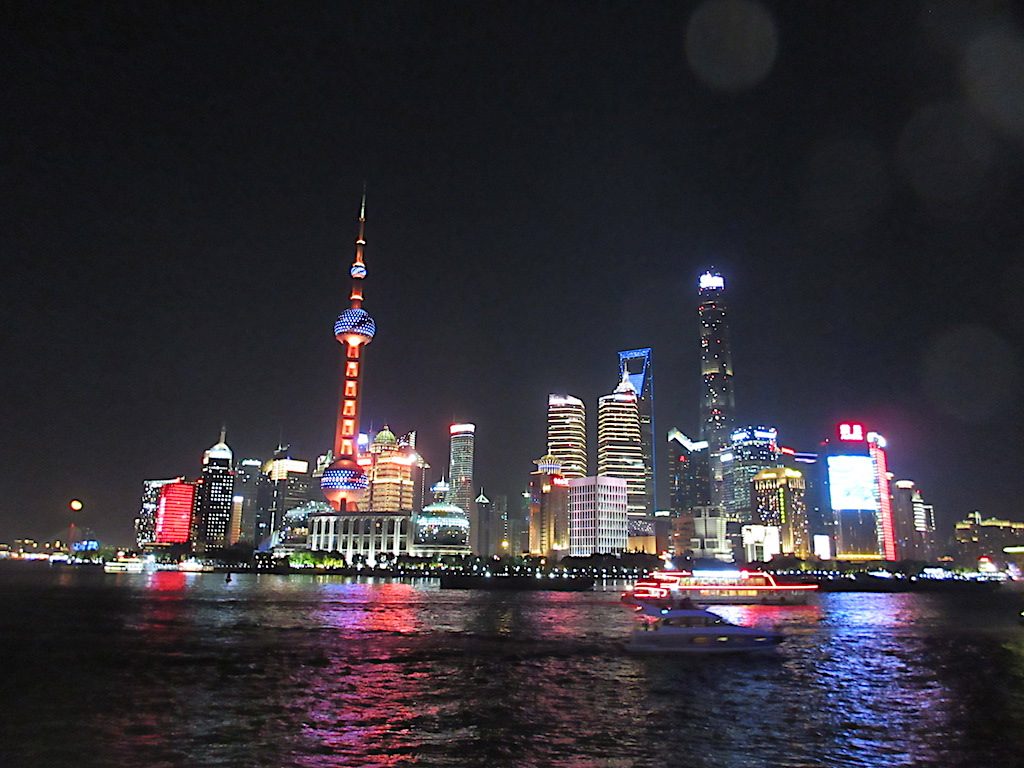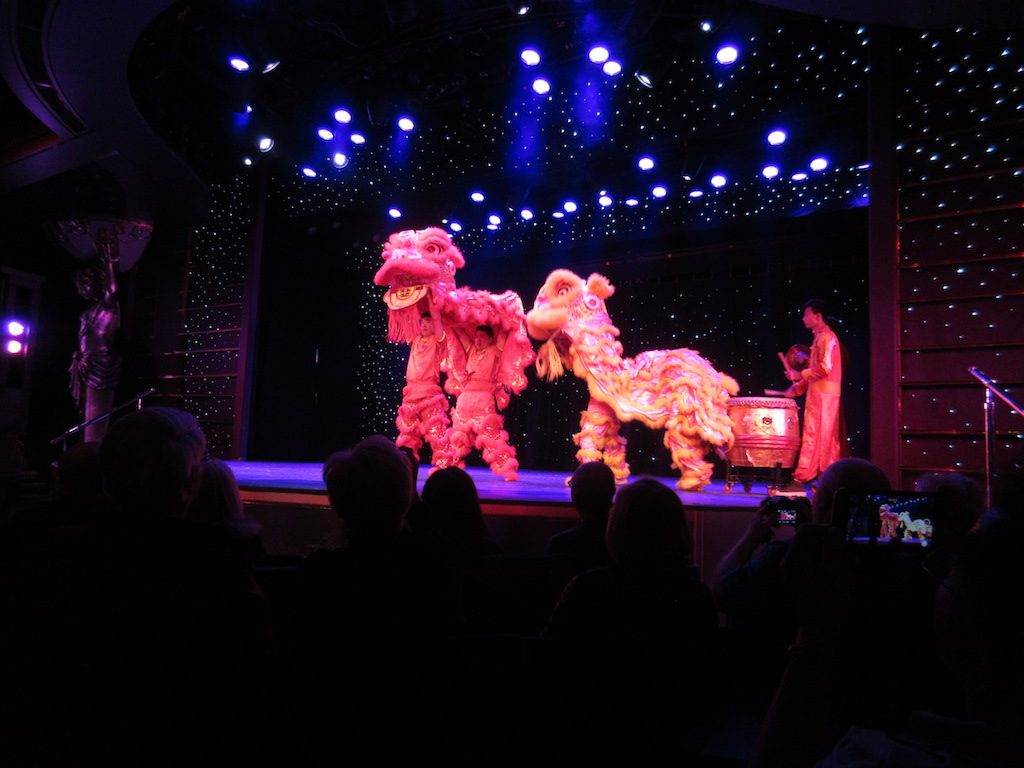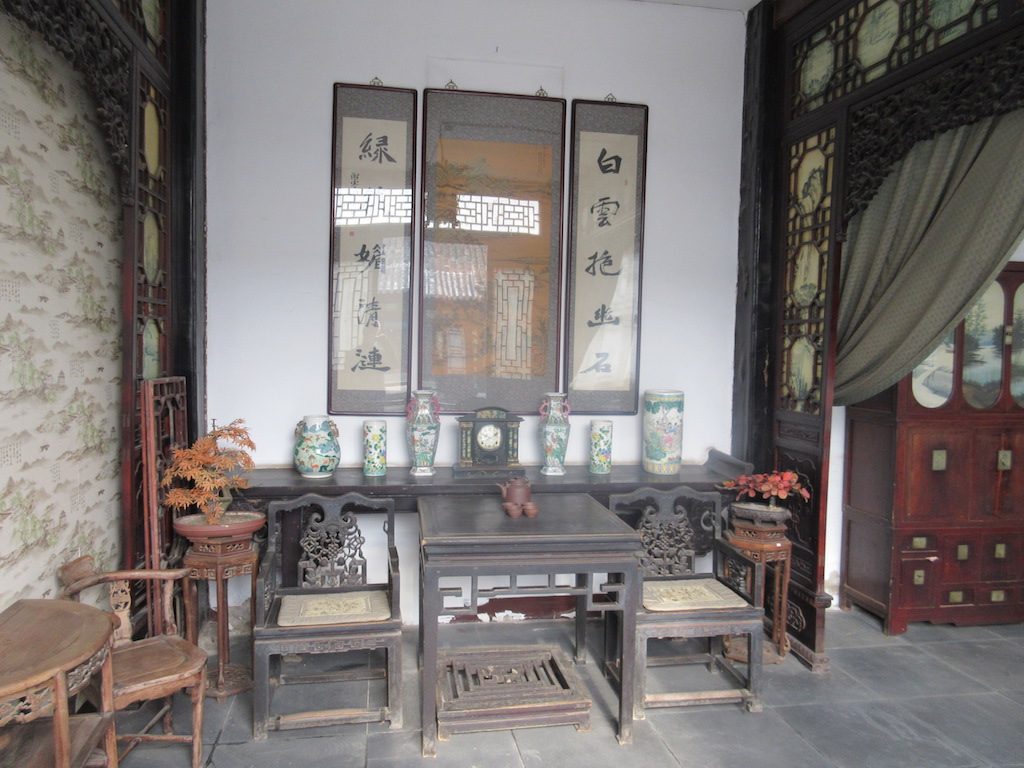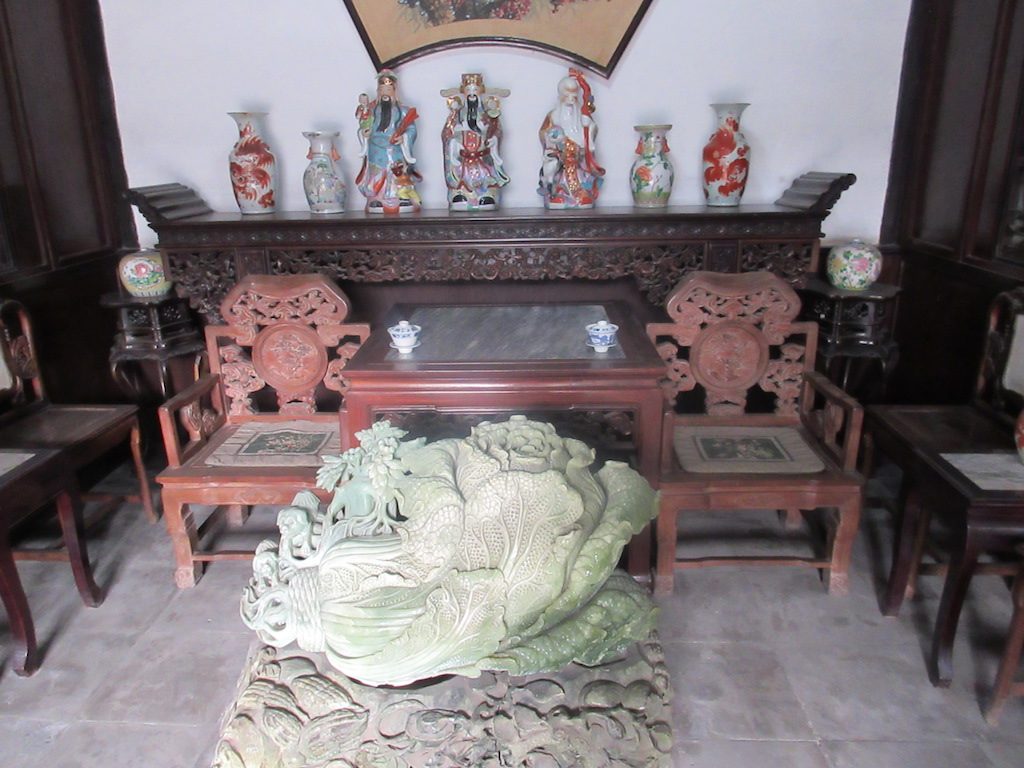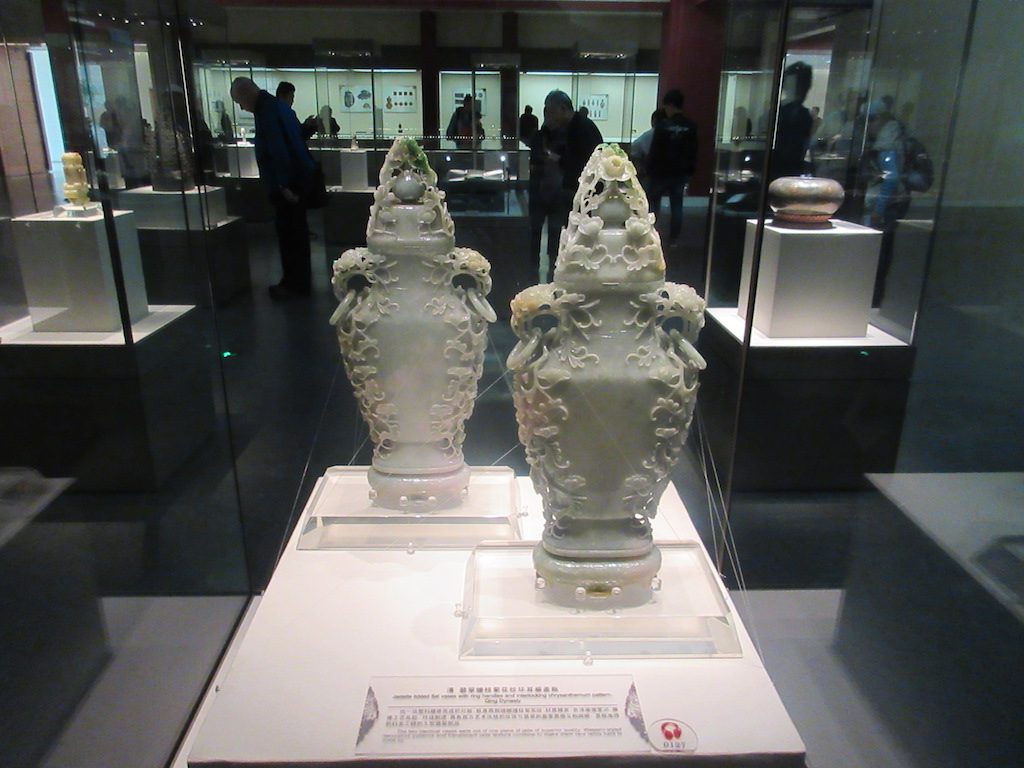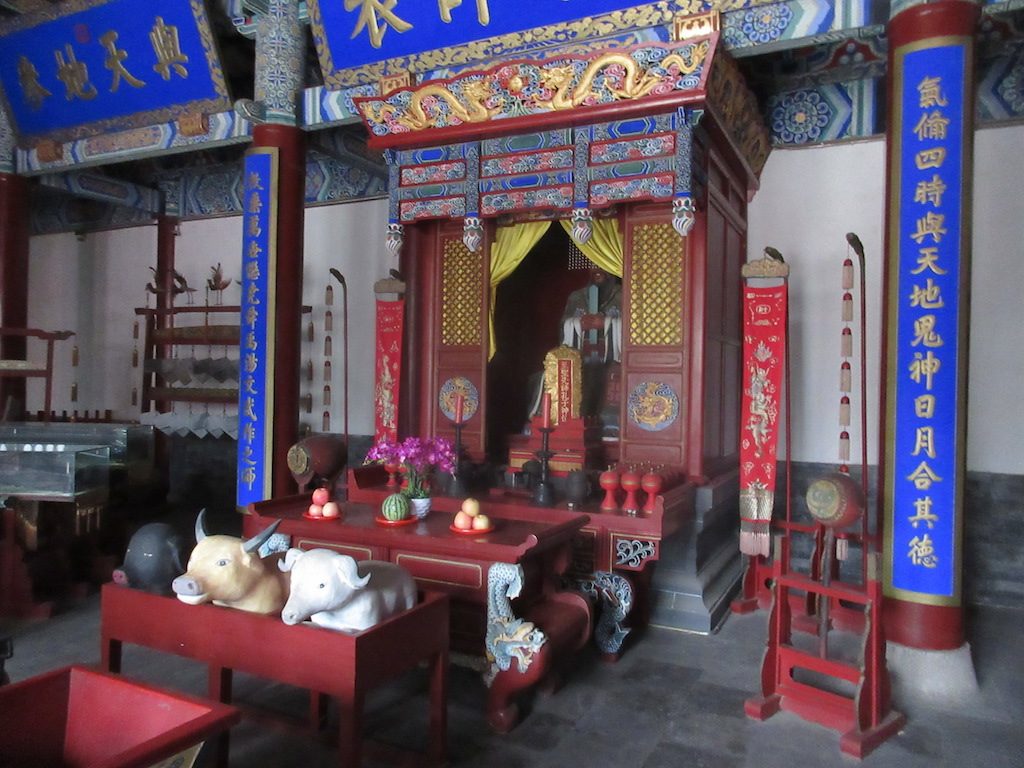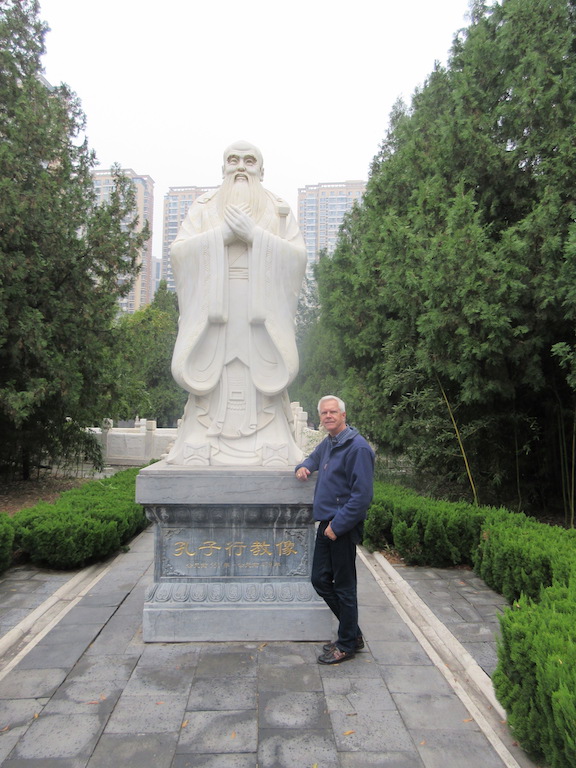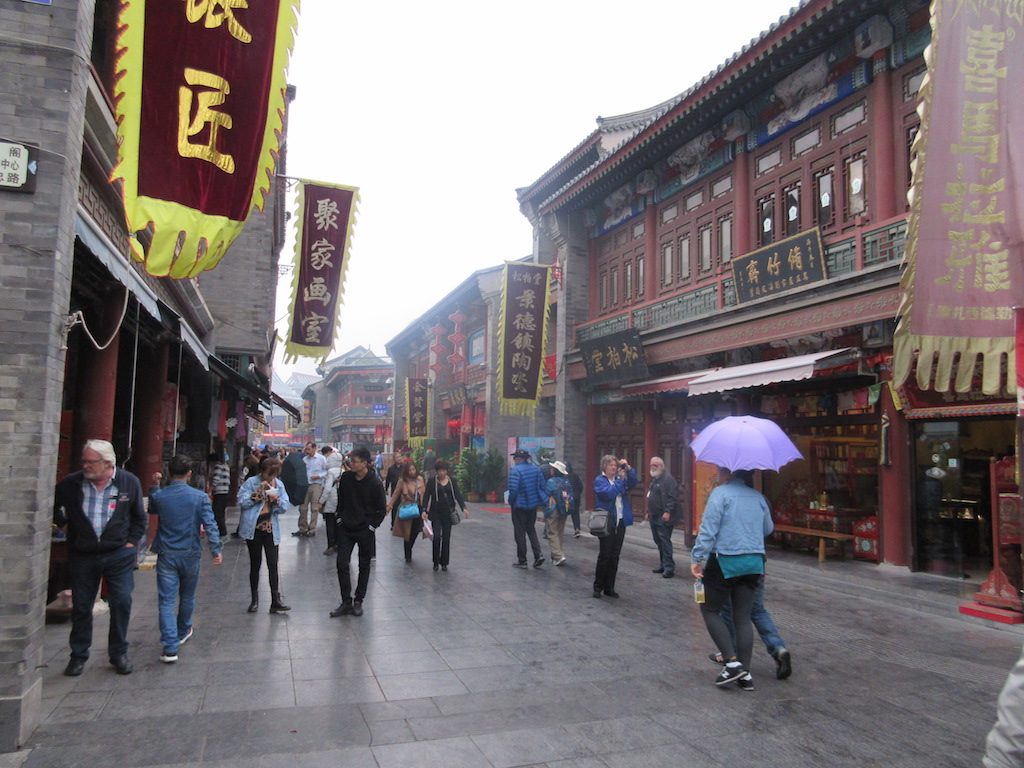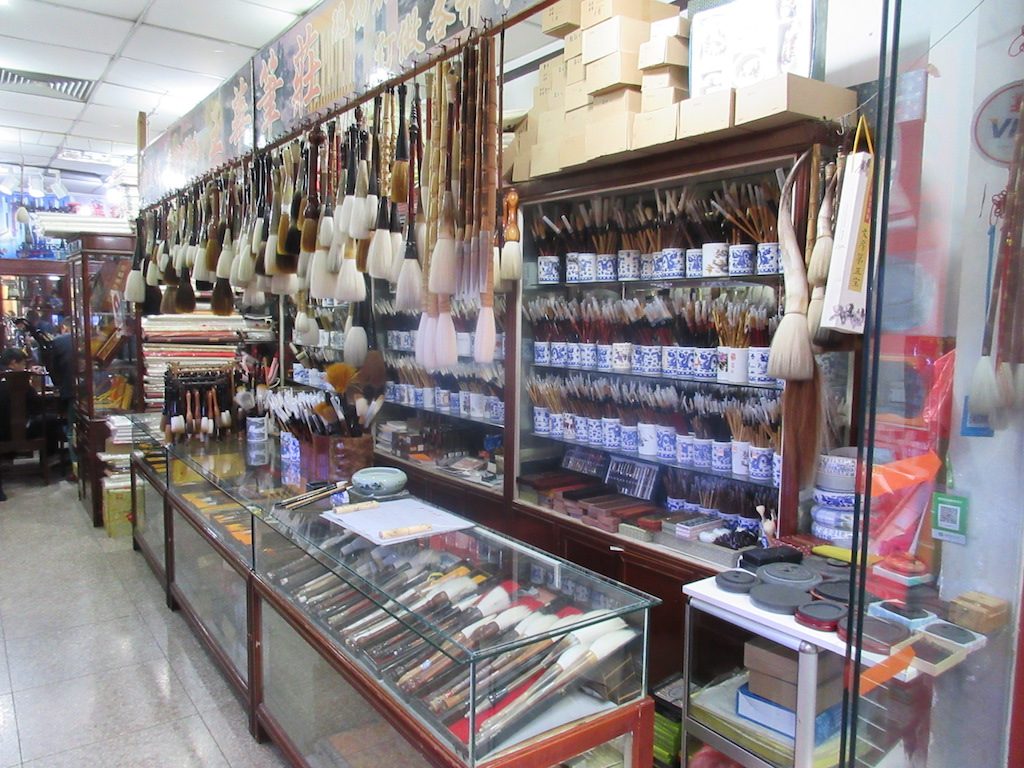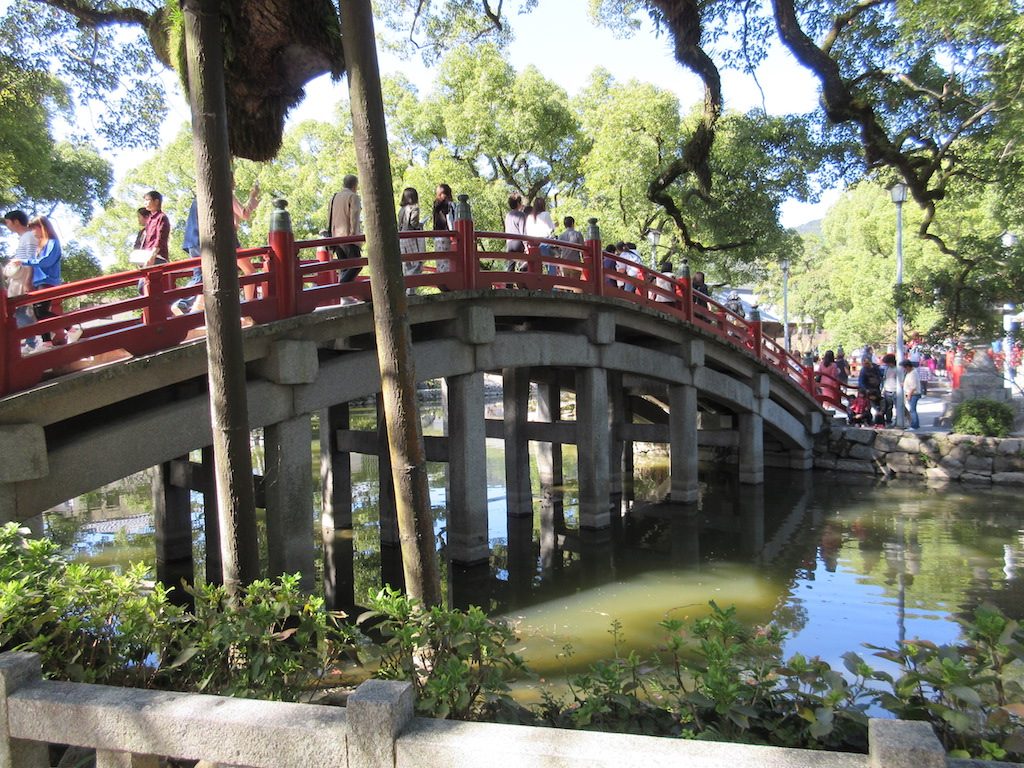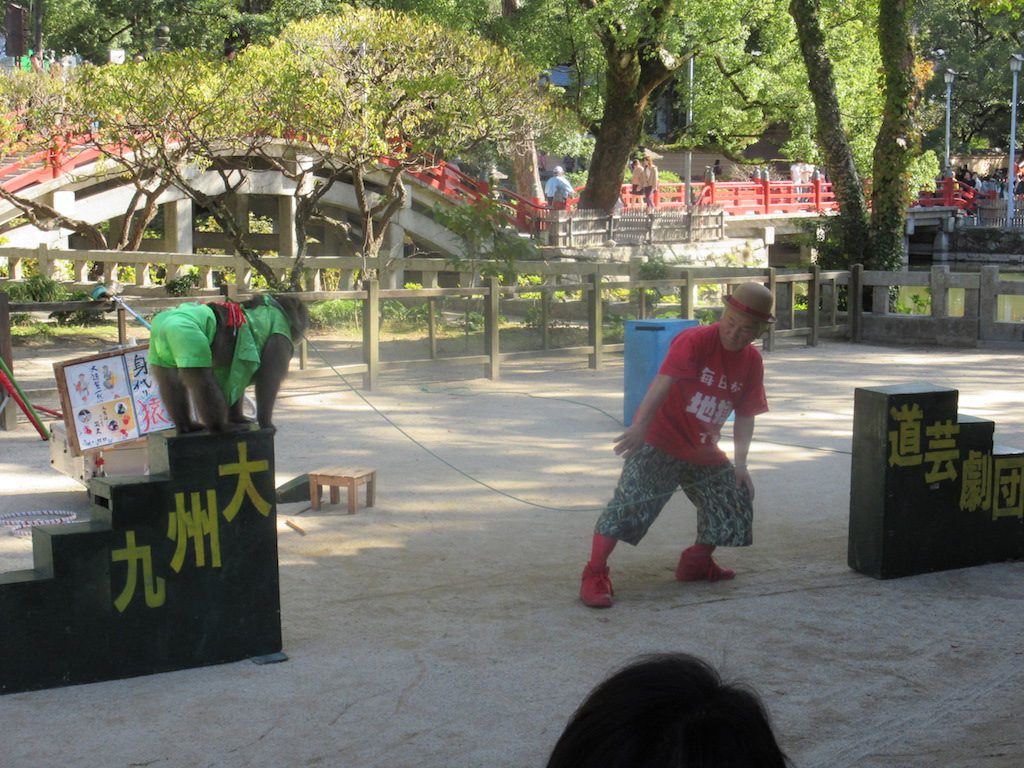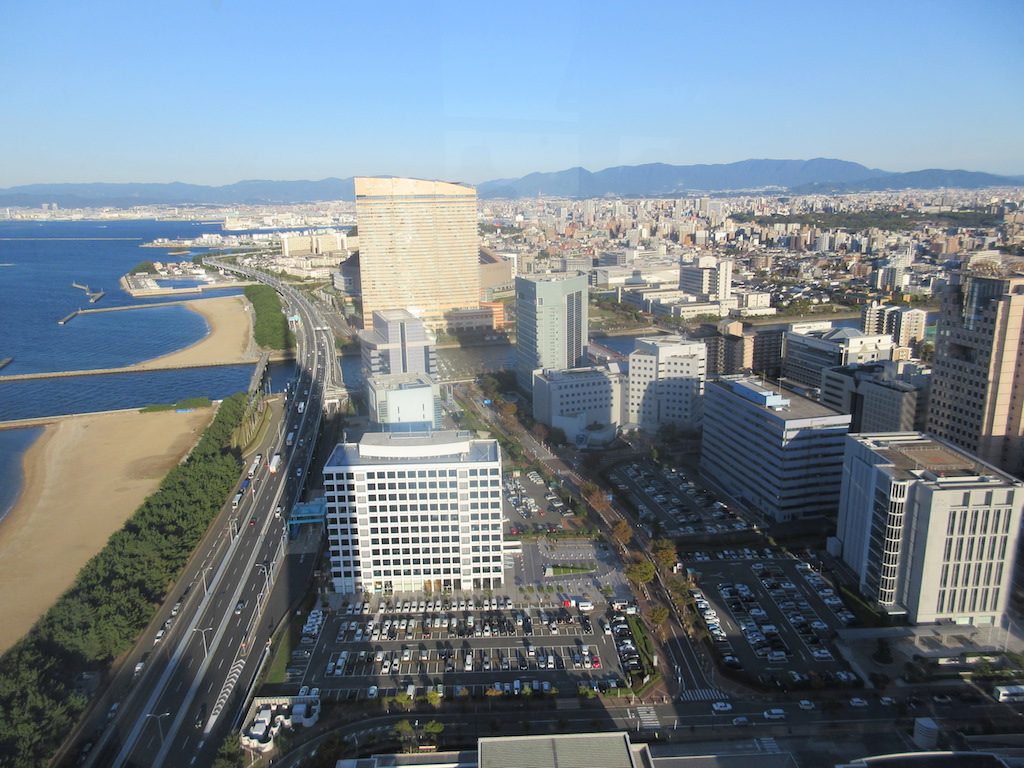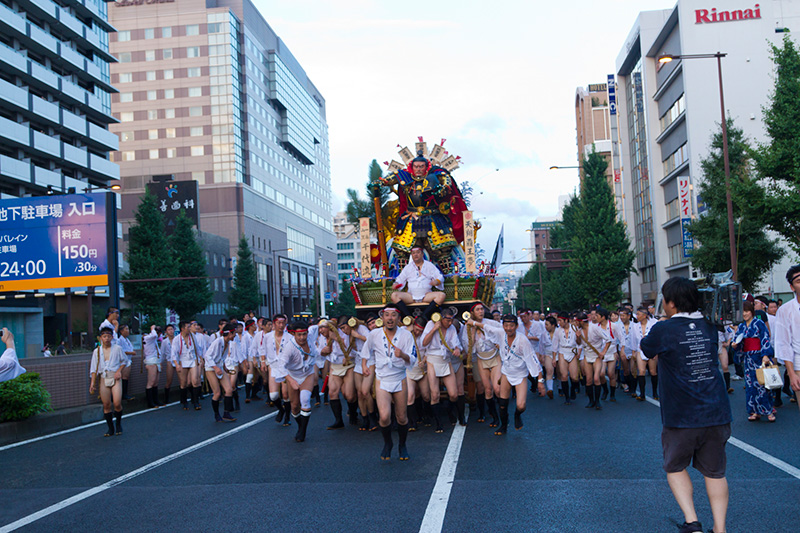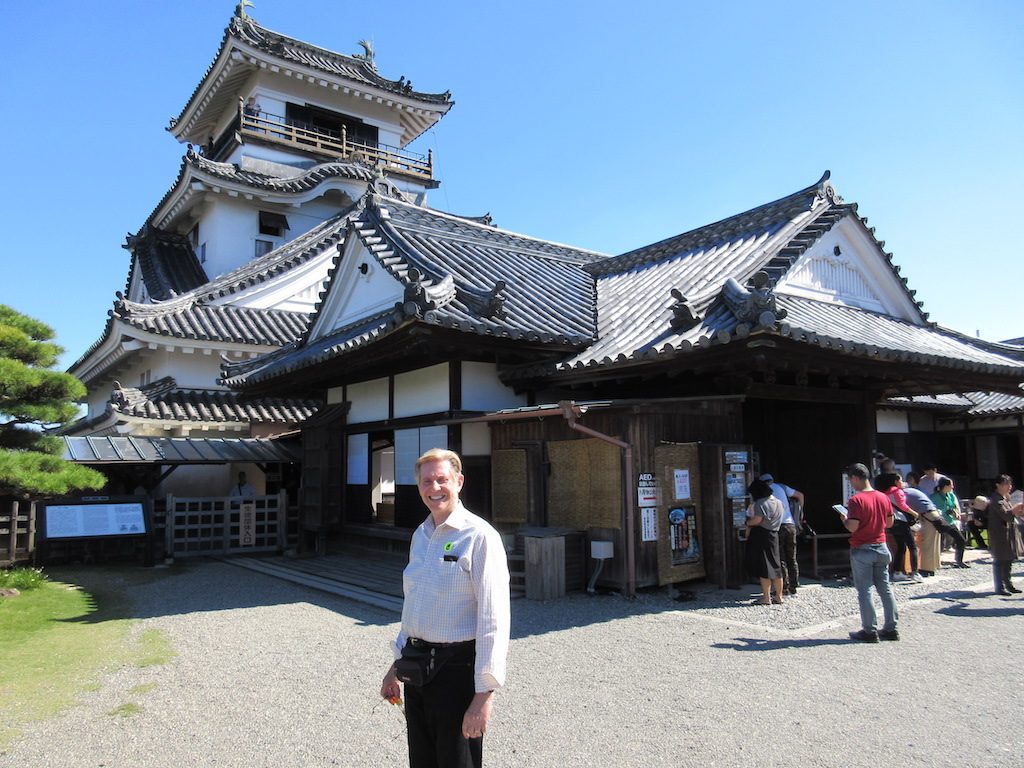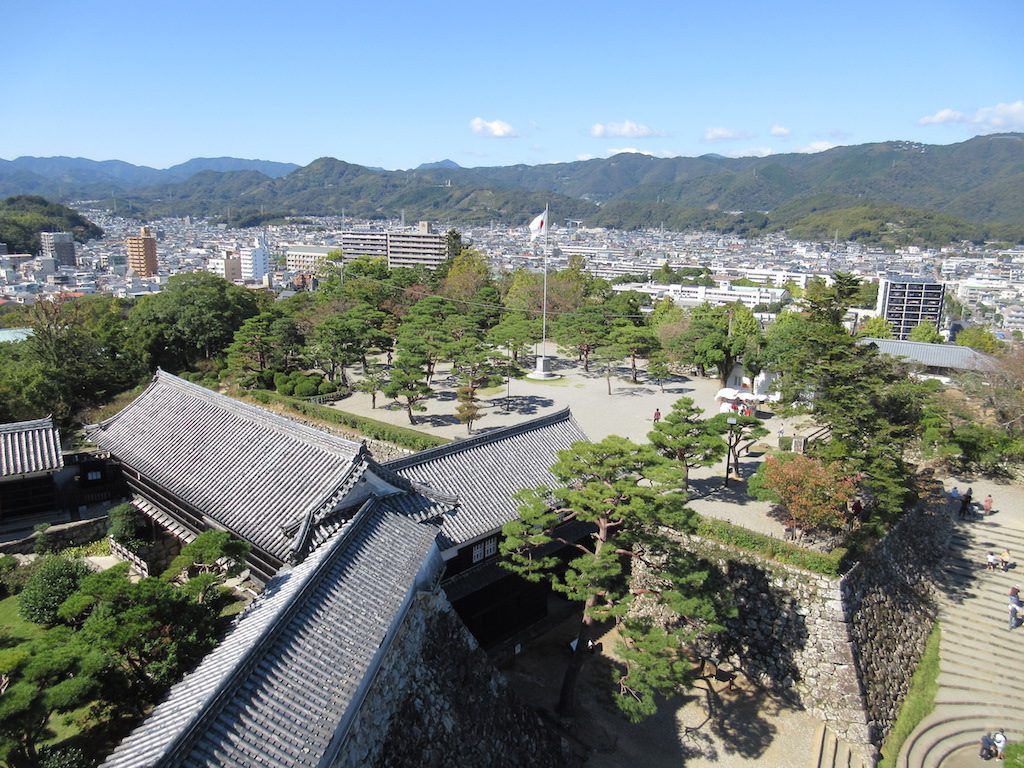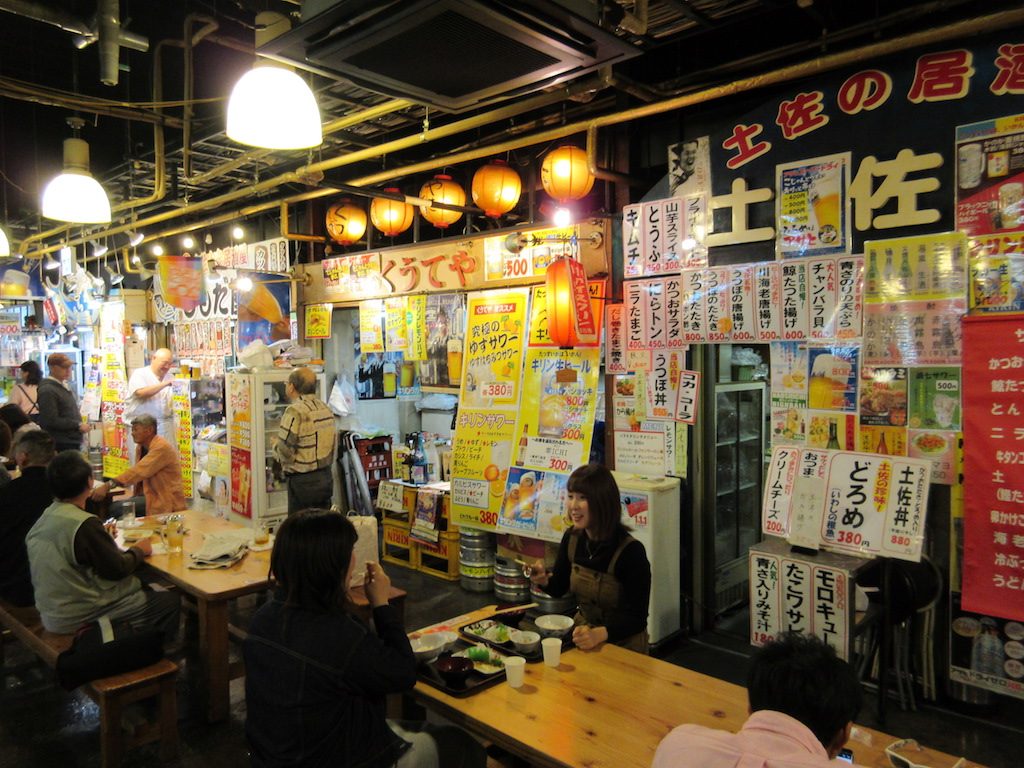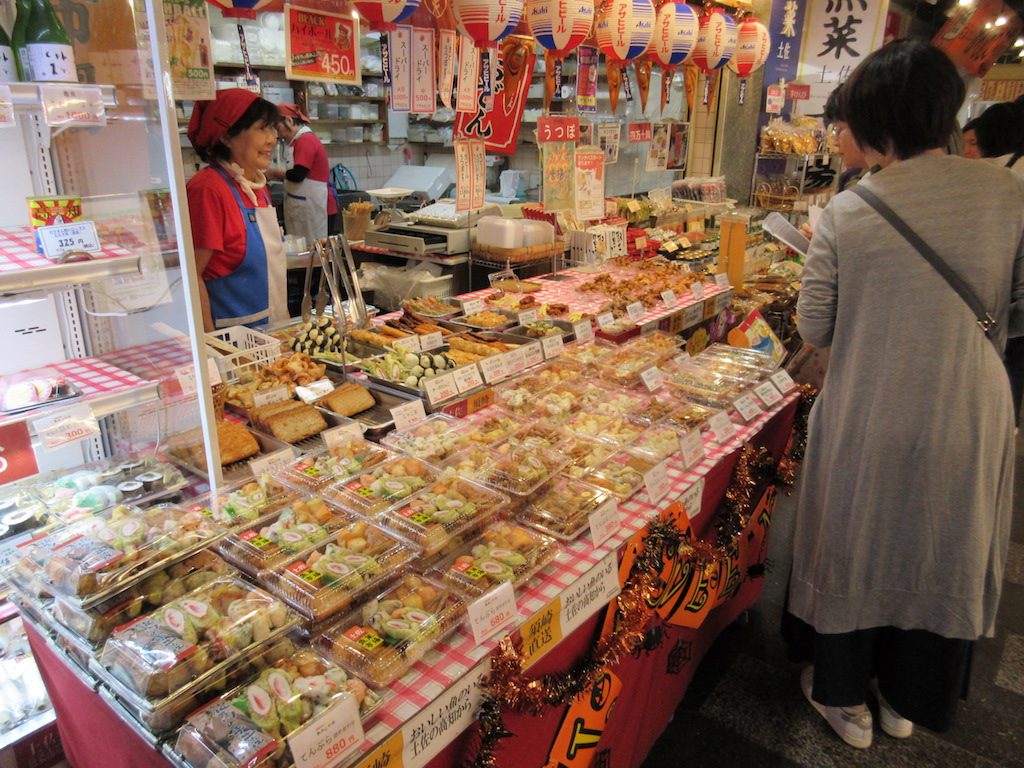The tour we took on this day was titled “Scenic Suzhou.” A town of great scenic beauty, Suzhou was founded in the 5th century BC and inspired the famous Chinese proverb, ‘In heaven there is paradise; on earth Suzhou and Hangzhou.’ The bus ride took about 1.5 hours through what was once the countryside and today is mostly built up to reach Suzhou.
First, we took a boat ride on the Grand Canal to see the beauty of Suzhou—whitewashed houses with gray tile roofs, old stone bridges spanning a spider web of waterways, women washing clothes in the river, and children playing nearby. These canals were hand dug long ago (about 250 BC?) but have stood the test of time and are still interesting to see today. The boat we rode in was an old wooden boat that seated about thirty people and was diesel powered. Most of the homes here do not have modern plumbing so locals have to use public toilets installed along the streets. Recently the government has begun to relocate local residents in hopes of renovating these old structures into shops and hotels but to keep the historic nature of the structures.
Next, we stopped at the Silk Embroidery Research Institute to learn more of this region’s important contribution to the silk and textile industry. There we saw how local families make a living making elaborate silk embroidery art work. The silk threads used in the embroidery are very fine and have an extraordinary luster to them making the pieces bright and colorful. Some pieces are one sided like a wall hanging while others are double sided and require a stand and glass to appreciate both sides of the embroidery piece. They create florals, dragons, carp, kittens in all types of sizes from quite small to very large. Some of the embroidery pieces take years to stich because of the complexity and detail of the pieces.
After our visit to the silk institute we had lunch at a local hotel called the Garden Hotel. The lunch was a traditional style Chinese lunch served at large tables of ten with a lazy Susan in the middle of the table. We enjoyed about ten different dishes including rice, eggplant, pickled seaweed, crab apples, chicken, fish, pork, spinach and more. Most of the items were very tasty to us, although some folks had a hard time eating some of the dishes.
Next, we visited one of China’s most famous gardens, the Humble Administrator’s Garden, which occupies an area of ten acres. The garden’s name comes from the proverb which says, ‘To cultivate a garden for a living is really the politics of a humble man.’ About two thirds of the garden is made up of lakes with islands dotted throughout. Throughout this large garden there are many pagoda-covered pathways for enjoying the gardens in rain or to gather shade on hot days. Weeping willow trees, bonsai, maples, lotus plants, azaleas and chrysanthemums abounded throughout the gardens. Unfortunately, we did not have more time to explore more of the gardens.
Two of our fellow passengers, Sylvia and Beauford asked us to join them for dinner to celebrate Sylvia’s birthday. The dining room stewards brought her a cake and sang a birthday greeting to her.
The evening’s entertainment was a Big Screen Movie in the main show lounge titled “On Wings of Eagles.” The movie is about Eric Liddell, one of Scotland’s greatest athletes (a runner) who won China’s first Olympic gold medal and about his return to war torn China. It is a heart wrenching movie about the Japanese occupation of China.

